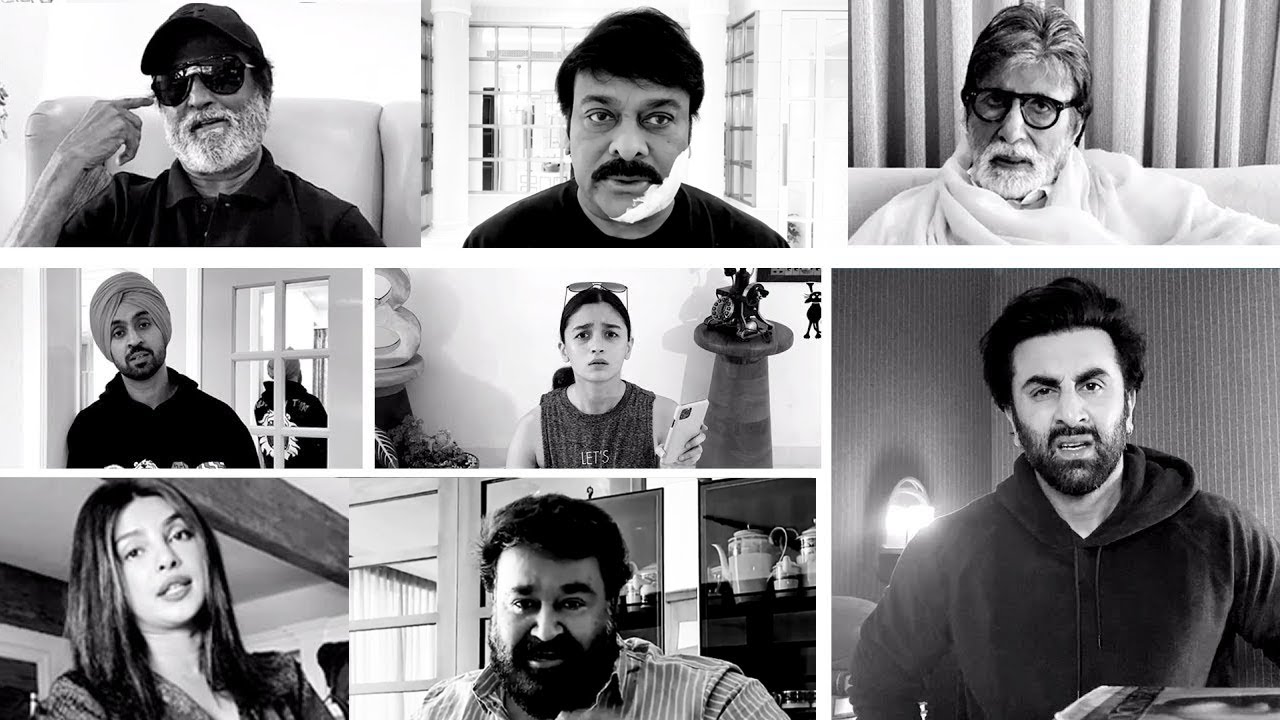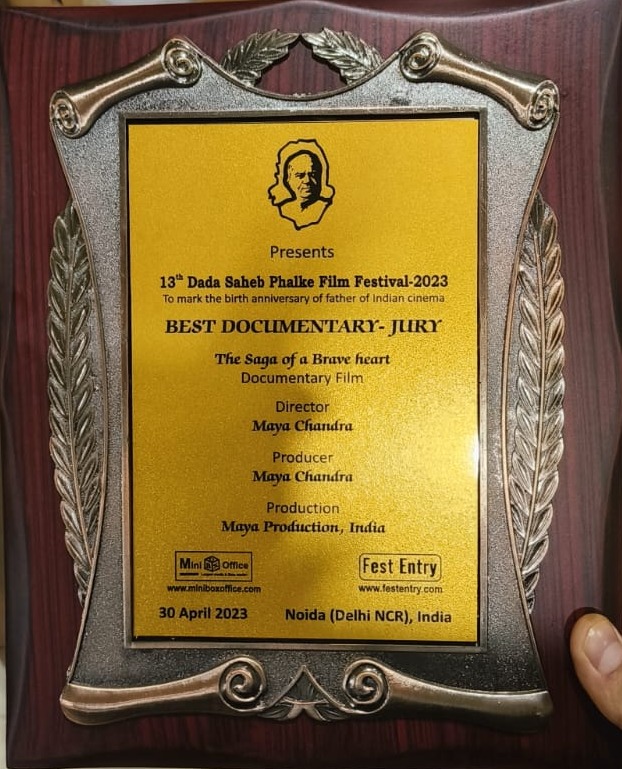Saga of a Braveheart 60+ Screenings
MAYA Films proudly celebrates the grand 75th screening of their...


By Suraksha Poojari | 8 February 2024
The term Boundaryless, speaks about the idea of going beyond boundaries. Leaning toward the limitless possibilities. And in the world of filmmaking, “boundaryless,” liberates filmmakers from traditional norms. Filmmaking in its essence embarks on the journey through different processes of production. Entwined with considerations like location, cast, crew, budgeting, and more. But, what happens when the conventional boundaries disintegrate? and the filmmakers are scattered across the globe? This is where the concept of boundaryless filmmaking takes center stage. Pushing the limits of the traditional cinematic norms.
In a world disrupted by the challenges of the COVID-19 pandemic. The foundation of filmmaking faced a seismic shift. The traditional setups became impractical as the lockdowns confined filmmakers to their homes. Casting a shadow over the industry and causing a severe employment crisis. Yet, in the face of adversity, the concept of boundary-less filmmaking emerged as a beacon of creativity. Unlike conventional filmmaking that relies on physical presence. This innovative approach breaks free from spatial constraints.
The rise of boundaryless filmmaking breaks the barriers. Releasing it from the constraint of a restricted boundary. Filmmaking has always been the thinking out of the box. The invention and innovation of technology fall hand in hand with the idea of evolution. From silent films to motion pictures, filmmaking has always broken the boundaries.
The evolution and the origin of storytelling began with theater. Innovation led to capturing the stories to the audience and the act forever in the frame. Leading towards breaking the boundary of stillness to the motion pictures. Thus, we can agree that filmmaking has always thought beyond the boundaries. Therefore, when the pandemic of COVID 19 affected employment everywhere in the world. Filmmaking found another driving, innovative way out. A traditional form of filmmaking requires a team or a group of people to come together to work, and be present. But with the help of technology, filmmakers redefined the idea of films.
During the initial onslaught of the pandemic, the restrictive atmosphere seemed insurmountable. Yet, technology emerged as a savior to filmmakers. Allowing them to continue to work, to transcend the limitation of physical presence. Using online collaboration tools, virtual communication platforms, and cloud-based editing software. These new innovations become the new tools of trade. The seamless integration of these technologies gave rise to a decentralized filmmaking process. In this process, the directors, actors, editors, and crew members collaborated from different corners of the world.

MAYA Films created the music video “Kannige Kanuva Devaru,” which showcases boundaryless filmmaking. Dedicated to frontline workers, this music video not only pays homage to the heroes of the pandemic. But also showcases the resilience of the filmmaking industry. The behind-the-scenes narrative of this project reveals a decentralized production process. Celebrity singers and artists recorded themselves from their respective locations. Editors worked from their homes, and cinematographers took meaningful shots of empty streets.
The goal was to support the frontline workers, who were saving lives and protecting others during the pandemic. Utilizing video conferencing tools, the team conducted virtual script readings and pre-production meetings. Each singer became their own cinematographer, setting up cameras in their homes with remote guidance. Editors compiled the footage using cloud-based editing software. The music video depicted the challenges and nuances of frontline workers during the lockdown.

Amidst the lockdown, a group of independent filmmakers, including actors, cinematographers, and editors. Collaborated to create a short film “Family.” The goal was to explore the dynamic of family relationships during quarantine. Utilizing video conferencing tools, the team conducted virtual script readings and pre-production meetings. Each actor became their own cinematographer, setting up cameras in their homes with remote guidance. Editors compiled the footage using cloud-based editing software. The film depicted the challenges and nuances of family life during the lockdown.
The cast and crew had technical differences that made the visuals inconsistent. We had to find creative solutions in post-production. It was difficult to coordinate scenes with many actors in different places. Each actor had to work around their own limitations at home. The absence of physical presence affected the on-screen chemistry, demanding nuanced performances. Freelance actors faced a shift in the industry dynamics, with traditional auditions and shoots halted. Cinematographers and editors adapted to working remotely. But faced financial difficulties because projects were uncertain. Despite these hurdles, collaborative projects like “Family ” provided a platform for artistic expression.
A small production company called Indie Visions also embarked on innovative filmmaking. They worked on a socially relevant project titled “Voices Unheard” during the lockdown. The movie depicted the challenges faced by marginalized communities in India during the pandemic. The filmmakers collaborated with freelance cinematographers, camera persons, and editors. Every cast and crew member working on this project was scattered across the globe. Virtual interviews and online research replaced traditional on-site shoots. Utilizing a combination of archived footage and remote interviews. The team crafted a compelling narrative that highlighted the struggles of various communities.
There were many technical challenges. These included slow internet speeds and finding good footage. Coordinating interviews across diverse locations required meticulous planning. The film’s immersive quality was affected because there were no on-site visuals. This made the filmmakers use creative storytelling techniques. Freelance cinematographers and editors faced challenges in adapting to the documentary format remotely. The project revealed important issues and financial struggles for freelancers during a slowdown.
The concept of boundaryless filmmaking is not a recent phenomenon. Throughout history, filmmakers have found ways to push boundaries. Evolving with the changing landscape of technology and societal needs. Reflecting on instances from the late 19th century, when the genre of films broke free from traditional molds. We see a parallel with the contemporary era. Filmmakers today continue to find loopholes, adapting to challenges. And ushering in a new era of cinematic creation that defies geographical limitations.
The beauty of boundaryless filmmaking lies in its constant evolution. Much like human development, the art of filmmaking adapts and transforms with time, technology, and societal demands. As we navigate through the endless possibilities of capturing stories, the boundaries of filmmaking blur. Giving rise to an art form that is limitless, boundless, and constantly reinventing itself.
Indie Visions faced initial setbacks due to the constraints of remote filmmaking. However, the project garnered attention for its social relevance. Demonstrating the potential for small production companies to create impactful content even in challenging circumstances.
These Indian case studies highlight the adaptability of the film industry during the pandemic. Both independent collaborations and small production companies showcased resilience in creating meaningful content. The challenges faced by freelancers underscored the need for industry support. And innovative solutions to sustain the artistic community during unprecedented times.
In conclusion, boundaryless filmmaking is not merely a response to crisis. It is a celebration of the limitless potential that lies within the art of storytelling. The journey was undertaken by filmmakers during the COVID-19 pandemic. Exemplified by MAYA Films’ “Kannige Kanuva Devaru,” showcases the resilience of an industry that thrives on innovation. As we stand at the intersection of technology and creativity, the boundaries of filmmaking dissolve. Paving the way for a future where storytelling knows no limits. The art of filmmaking, in its boundaryless essence, continues to evolve, captivate, and inspire, transcending the constraints of time and space.

MAYA Films proudly celebrates the grand 75th screening of their...

6th June 2023 The evening unfolded with an enchanting celebration...

In a moment that will forever be etched in our...